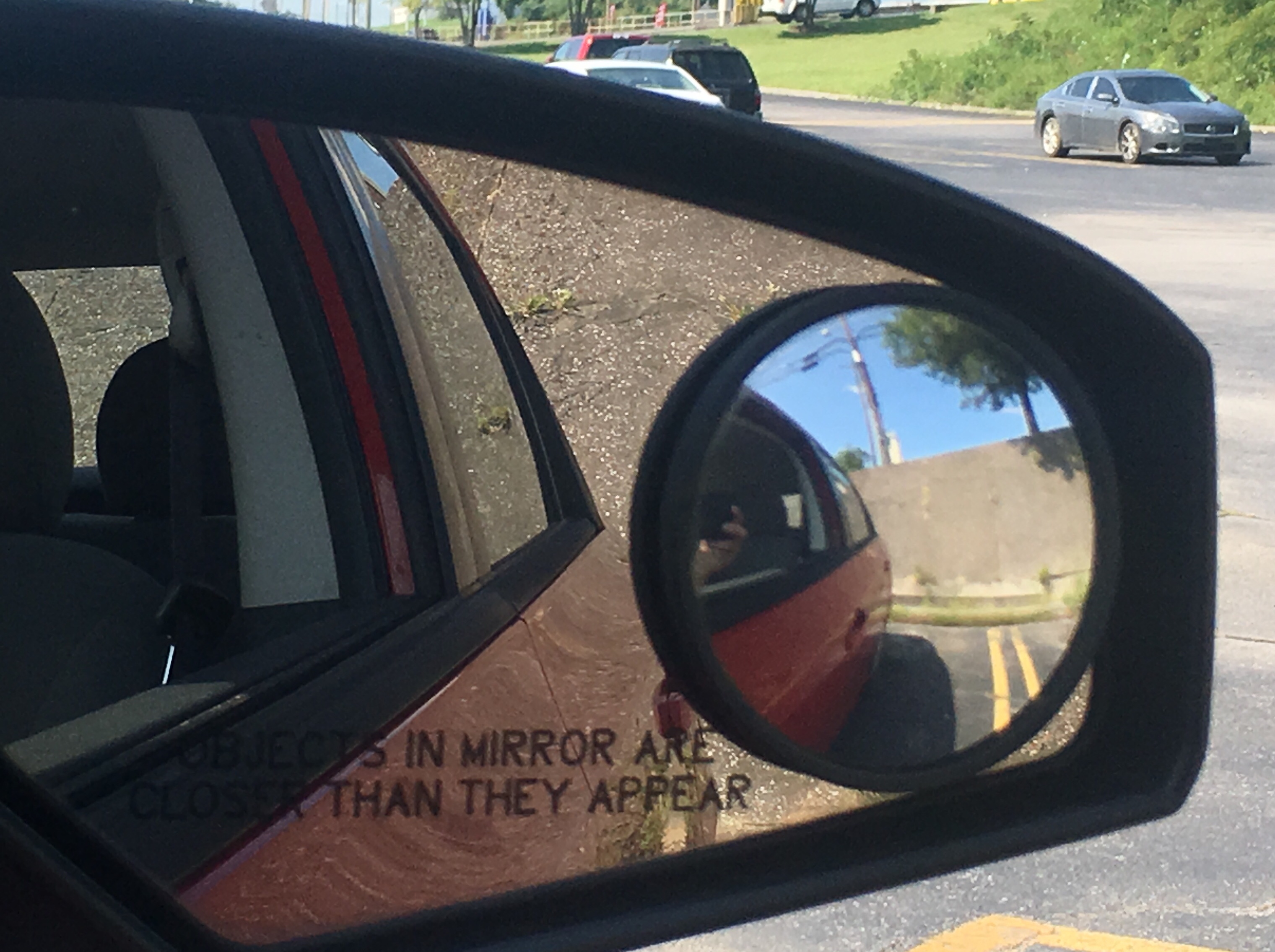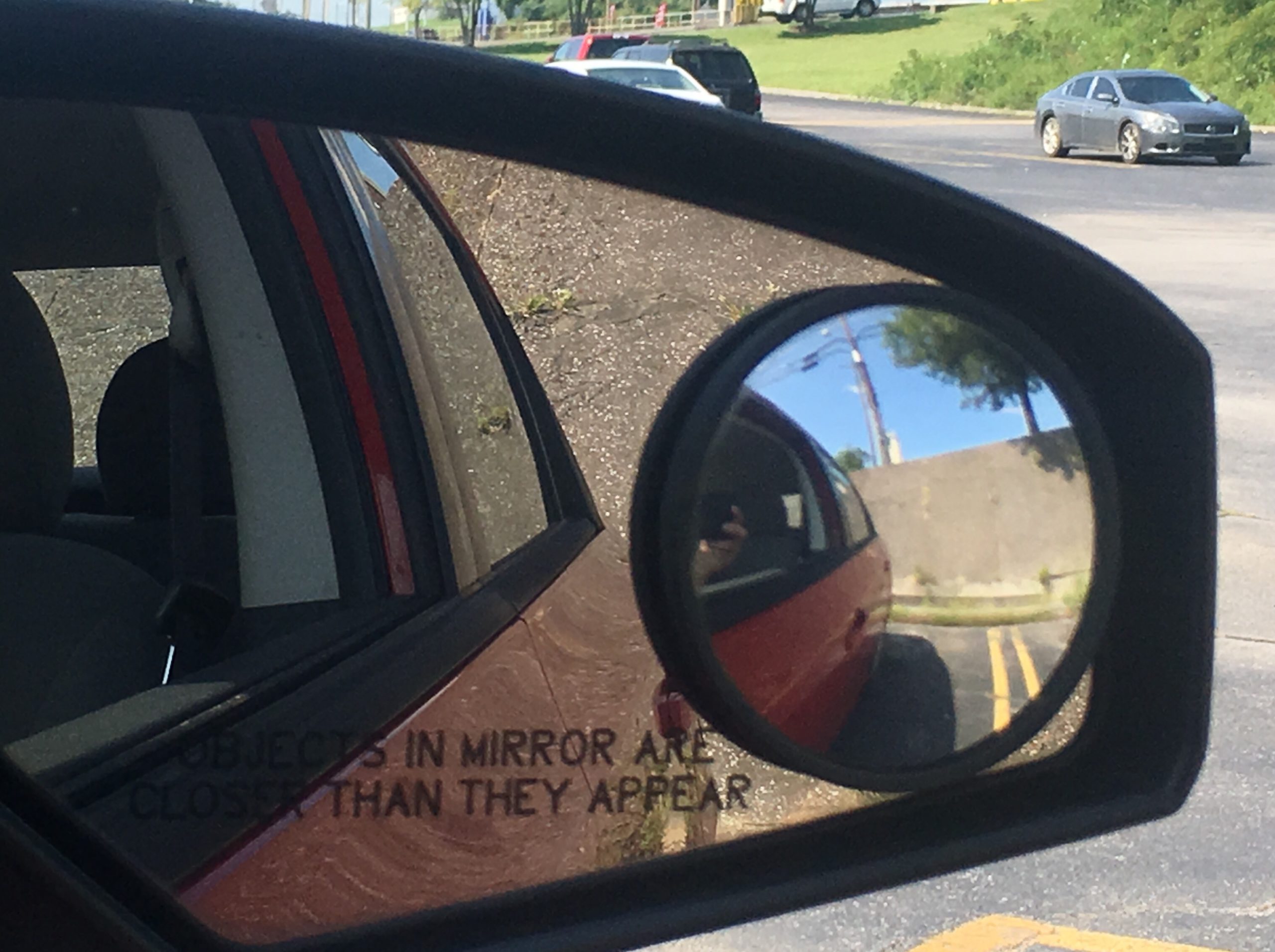The disclaimer “Objects in mirror are closer than they appear” is featured on passenger-side mirrors of vehicles manufactured in the United States, Canada, India, Korea, and Australia. These mirrors are convex, which means they distort the size of objects viewed in the mirror, and as such, distorts the perception of how close or far away objects are from the driver’s car. However, this distortion allows for the reflection of a wider field of view on the side of the vehicle to help eliminate blind spots.

In the United States and Canada, driver’s side mirrors are flat or “planar.” Dual convex mirrors are not currently the norm on vehicles manufactured in North America based on requirements implemented by the National Highway Traffic Safety Administration’s Federal Motor Vehicle Safety Standard 111 and the Canada Motor Vehicle Safety Standard 111.
Elsewhere, such as in Europe, dual convex mirrors are included on vehicles. Many automotive companies support having two convex mirrors on the sides of cars to eliminate blind spots, as well as reduce the driver’s need to twist his head to the left when turning or changing lanes. However, flat mirrors have been required to avoid distortion and give drivers the most accurate assessment of traffic to their left for changing lanes, called “unit magnification.”
This may soon change, though. According to a 2013 statement from the National Highway Traffic Safety Administration, “The agency intends to reevaluate existing side-mirror requirements (FMVSS No. 111) to determine whether convex mirrors should be harmonized with European requirements.” Currently, drivers can modify their driver’s-side mirrors to include a convex mirror add-on, as long as the mirrors also have the required flat portion.
Article compliments of MetroCreative. FC18A330
About the Author
Discover more from Courageous Christian Father
Subscribe to get the latest posts sent to your email.



